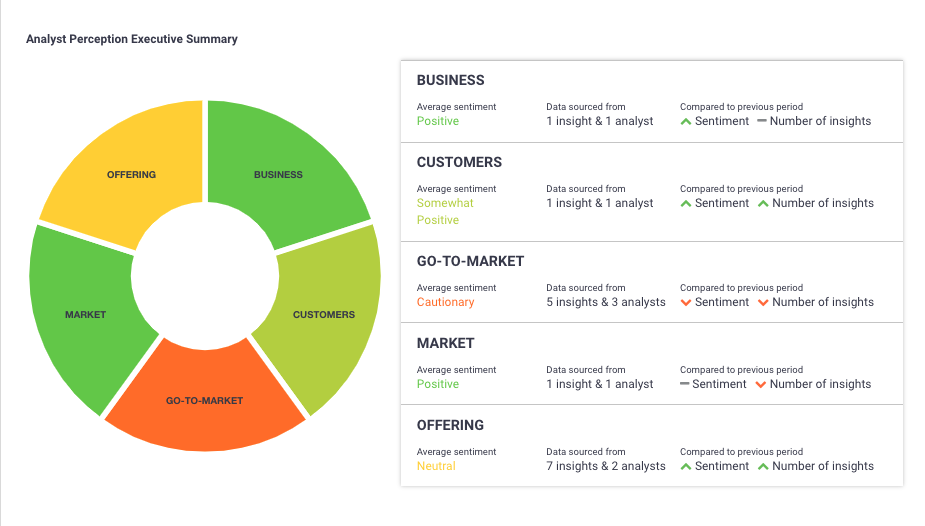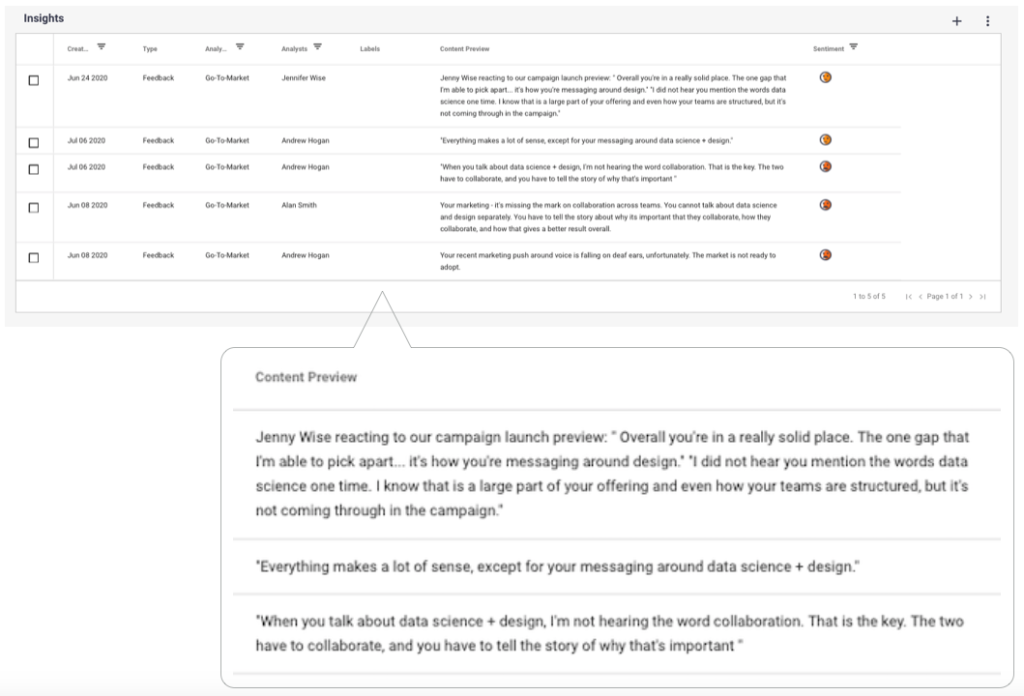by Christina Neill
July 9, 2020

When we systematically capture and analyze analysts’ feedback, we’re bound to see themes emerge. In the simplest sense, analysts’ feedback can often be a misperception of your business, product, or service or it could be considered “fair.” Fair feedback is usually a challenge or product gap you and your company are already aware of. A misperception typically doesn’t align with your views – your company believes they are strong in an area that the analyst does not. Both types of feedback are important, but each requires different actions to be taken from the AR team.
Addressing analyst misperceptions has been AR’s bread and butter since its inception. AR pros are great at recognizing misalignment off of gut instincts, but sometimes a feeling of why analysts have a misperception isn’t enough.
To truly address misperceptions, you have to know exactly what the analyst thinks about you and why. Unearthing these truths is a key component to creating an insights-driven AR program, including an insights-driven AR plan. When you capture, categorize, and analyze analyst insights, you have real data that shows you exactly where you need to take your next action – and what you need to say when you do it.
Take for example, this feedback for (pretend) company Spark:

Analysts perceive Spark’s Go-to-Market strategy as cautionary. When we dive deeper, we can see exactly why they feel GTM is cautionary.

These insights are our signals for the actions we need to take. Because the analysts aren’t seeing our strategy as we believe they should, the AR team needs to address this feedback via a briefing campaign, customer success stories, inquiry conversations or advisory days.
Other times, it may be a signal that the analysts see something in the market that we’re not seeing. Misperceptions may be an opportunity for us to learn from analysts via inquiries and advisory days about their point of view, so we can either adjust our AR strategy or share their feedback with our internal teams.
Analysts’ feedback about known weaknesses, presents an opportunity to engage with other members of your org to show them AR’s true value. When an analyst provides specific commentary in an insights-driven program, you’re able to take those comments and share it with your C-suite and product managers.
These insights can help inform your company’s roadmap and feed your company’s strategy. When we share analysts’ feedback we have the opportunity to influence the company’s priorities. Since analysts are direct proxies to the market and your buyers, when we address their feedback, we ultimately address the market trend, often resulting in better perceptions and more recommendations. Plus, when this cycle happens, we have the added benefit of being seen as key players in our orgs – who doesn’t want that?
Using analysts’ feedback as the guide, we can create smart, easy, and impactful interactions in our AR programs. When we capture this feedback systematically we have clear justification for the steps we need to take and what we need to do when we take them.
In our next webinar, we’re going to show examples of how you can apply this insights-driven framework into your AR program plans. We’ll look at examples of misperceptions and fair feedback, and what the AR teams have done to make gains as they respond to each.